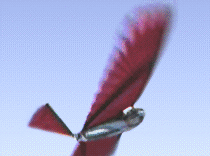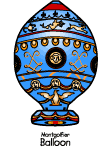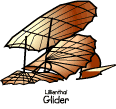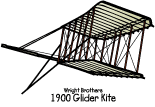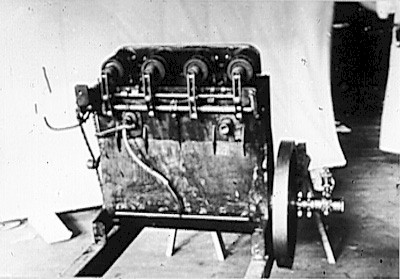English is fun
This is an educational blog with educational material for Elementary School pupils
Saturday, 15 November 2025
Wednesday, 12 November 2025
Saturday, 18 October 2025
Monday, 21 July 2025
Learn English with Music
MusicLexis aspires to make the world languages more accessible through music! For each lexical item the MusicLexis dictionaries offer a musical example, a sentence example taken from a popular song. The aim of the musical examples is to help you learn and remember new vocabulary more easily. Launched in 2015, MusicLexis continues to expand with more languages and more musical examples and it will be forever expanding as new music is being produced!
https://musiclexis.com/index.php/Main_Page
and GRAMMAR
https://musiclexis.com/grammar/index.php/Category:Grammar_points
Tuesday, 24 June 2025
Nelson Mandela's biography
Mandela grew up in a tiny village and was the first member of his family to attend school. Both of his parents were illiterate.
He rose to the Presidency of the African National Congress (ANC) in 1950 and started leading nonviolent protests against racism.
His actions landed him in prison for 27 long years.
Nelson Mandela was the leader of the South African movement to freedom and his participation in the various protests and his requirement to see equality in his country led him to fight in a nonviolent way.
1st video childhood
After
27 years in prison he became the first democratically elected
president of South Africa, a country
where children of all skin colours gained
equal rights for the first time.
Nelson continued to help South Africa’s children and demands
respect for their rights. He started
his own
children’s foundation, the Nelson Mandela Children’s Fund (NMCF),
which helps children whose parents have died of AIDS, street
children, disabled children
and poor children.
As
president Nelson Mandela donated
half of his salary to poor children and when he received the Nobel
Peace Prize he gave part of the
prize money to help street children. Nelson not only wants all
children to feel loved, he also wants to give them a better future.
That’s why he also wanted to give children the chance to develop
their talents
Nelson
Mandela was the leader of the South African movement to
freedom and his participation in the various protests and his
requirement to see equality in his country led him to fight
in a nonviolent way.
.
After
27 years in prison he became the first democratically elected
president of South Africa, a country
where children of all skin colours gained
equal rights for the first time.
Nelson continued to help South Africa’s children and demands
respect for their rights. He started
his own
children’s foundation, the Nelson Mandela Children’s Fund (NMCF),
which helps children whose parents have died of AIDS, street
children, disabled children
and poor children.
As
president Nelson Mandela donated
half of his salary to poor children and when he received the Nobel
Peace Prize he gave part of the
prize money to help street children. Nelson not only wants all
children to feel loved, he also wants to give them a better future.
That’s why he also wanted to give children the chance to develop
their talents
Nelson Mandela was the leader of the South African movement to freedom and his participation in the various protests and his requirement to see equality in his country led him to fight in a nonviolent way.
.Saturday, 8 March 2025
History of flight -Wright Brothers
MAKE YOUR OWN PLANE
HOW DID WE GET HERE?
 | How Did We Learn to Fly Like the Birds? |
Myths and Legends of Flight
Greek Legend - Pegasus
Bellerophon the Valiant, son of the King of Corinth, captured Pegasus, a winged horse. Pegasus took him to a battle with the triple headed monster, Chimera.
Icarus and Daedalus - An Ancient Greek Legend
Daedalus was an engineer who was imprisoned by King Minos. With his son, Icarus, he made wings of wax and feathers. Daedalus flew successfully from Crete to Naples, but Icarus, tired to fly too high and flew too near to the sun. The wings of wax melted and Icarus fell to his death in the ocean.
King Kaj Kaoos of Persia
King Kaj Kaoos attached eagles to his throne and flew around his kingdom.
Alexander the Great
Alexander the Great tied four mythical wings animals, called Griffins, to a basket and flew around his kingdom.
Early Efforts of Flight
Around 400 BC - China
The discovery of the kite that could fly in the air by the Chinese started humans thinking about flying. Kites were used by the Chinese in religious ceremonies. Kites have been important to the invention of flight as they were the forerunner to balloons and gliders.
Humans try to fly like birds
For many centuries, humans have tried to fly just like the birds. Wings made of feathers or light weight wood have been attached to arms to test their ability to fly. The results were often disastrous as the muscles of the human arms are not like a birds and can not move with the strength of a bird.
Hero and the Aeolipile
Aeolipile | The ancient Greek engineer, Hero of Alexandria, worked with air pressure and steam to create sources of power. One experiment that he developed was the aeolipile which used jets of steam to create rotary motion. . |
1485 Leonardo da Vinci - The Ornithopter
Leonardo da Vinci's Ornithopter | Leonardo da Vinci made the first real studies of flight in the 1480's. He had over 100 drawings that illustrated his theories on flight. The Ornithopter flying machine was never actually created. It was a design that Leonardo da Vinci created to show how man could fly. The modern day helicopter is based on this concept. |
1783 - Joseph and Jacques Montgolfier- the First Hot Air Balloon
One of The Montgolfier's Balloons | The brothers, Joseph Michel and Jacques Etienne Montgolfier, were inventors of the first hot air balloon. In 1783, the first passengers in the colorful balloon were a sheep, rooster and duck. It climbed to a height of about 6,000 feet and traveled more than 1 mile. After this first success, the brothers began to send men up in balloons. The first manned flight was on November 21, 1783 |
1799 - 1850's - George Cayley
One Version of a Glider | George Cayley worked to discover a way that man could fly. He designed many different versions of gliders that used the movements of the body to control. A young boy, whose name is not known, was the first to fly one of his gliders. Over 50 years he made improvements to the gliders. |
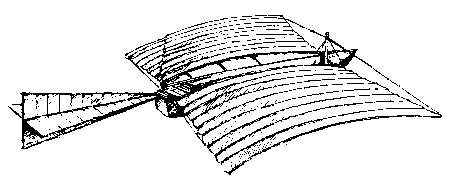
One of the many drawings of gliders
19th And 20th Century Efforts
1891 Otto Lilienthal
One of Lilienthal's Gliders | German engineer, Otto Lilienthal, studied aerodynamics and worked to design a glider that would fly. He was the first person to design a glider that could fly a person and was able to fly long distances. After more than 2500 flights, he was killed when he lost control because of a sudden strong wind and crashed into the ground. |
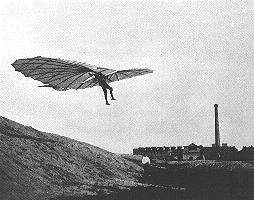
Lilienthal's Glider in Flight
1891 Samuel P. Langley
Langley's Aerodrome |
Samuel Langley was an astronomer, who realized that power was needed to help man fly. He built a model of a plane, which he called an aerodrome, that included a steam-powered engine. In 1891, his model flew for 3/4s of a mile before running out of fuel. Langley received a $50,000 grant to build a full sized aerodrome. It was too heavy to fly and it crashed. He was very disappointed. He gave up trying to fly. His major contributions to flight involved attempts at adding a power plant to a glider. He was also well known as the director of the Smithsonian Institute in Washington, DC
|
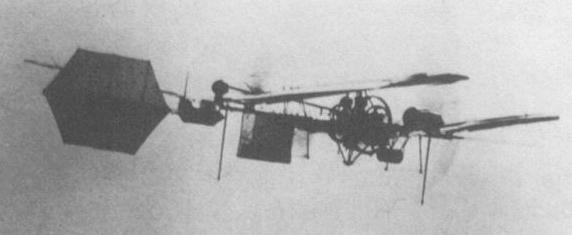
Model of Langley Aerodrome
1894 Octave Chanute
Octave Chanute published Progress in Flying Machines in 1894. It gathered and analyzed all the technical knowledge that he could find about aviation accomplishments. It included all of the world's aviation pioneers. The Wright Brothers used this book as a basis for much of their experiments. Chanute was also in contact with the Wright Brothers and often commented on their technical progress.
Orville and Wilbur Wright and the First Airplane
First, they read about all the early developments of flight. They decided to make "a small contribution" to the study of flight control by twisting their wings in flight. Then they began to test their ideas with a kite. They learned about how the wind would help with the flight and how it could affect the surfaces once up in the air.
A Drawing of a Wright Brothers Glider (1900) | The next step was to test the shapes of gliders much like George Cayley did when he was testing the many different shapes that would fly. They spent three years testing and learning about how gliders could be controlled at Kitty Hawk, North Carolina. |
Picture of the actual 12 horsepower engine used in flight | . In 1902, with a perfected glider shape, they turned their attention to how to create a propulsion system that would create the thrust=boost, ώθηση needed to fly. The early engine that they designed generated almost 12 horsepower. That's the same power as two hand-propelled lawn mower engines! |
The Wright Brother's Flyer |
The "Flyer" lifted from level ground to the north of Big Kill Devil Hill, North Carolina, at 10:35 a.m., on December 17, 1903. Orville piloted the plane which weighed about six hundred pounds.
|
Actual Flight of The Flyer at Kitty Hawk | The first heavier-than-air flight traveled one hundred twenty feet=36.58 m in twelve seconds. The two brothers took turns flying that day with the fourth and last flight covering 850 feet (259.08 meters) in 59 seconds. But the Flyer was unstable and very hard to control. The brothers returned to Dayton, Ohio, where they worked for two more years perfecting their design. Finally, on October 5, 1905, Wilbur piloted the Flyer III for 39 minutes and about 24 miles(38.6 km) of circles around Huffman Prairie. He flew the first practical airplane until it ran out of gas. |
Humankind was now able to fly! During the next century, many new airplanes and engines were developed to help transport people, luggage, cargo, military personnel and weapons. The 20th century's advances were all based on this first flights by the American Brothers from Ohio (Taken from https://www.grc.nasa.gov/www/k-12/UEET/StudentSite/historyofflight.html )
DO THE EXERCISE : https://www.liveworksheets.com/bu755659op
https://www.getepic.com/app/read/36509AIR AND SPACE MUSEUM Washington DC the place where you can see the first airplane the Wright Brothers made and many more staff on aviation. Really fascinating to watch the extract from the movie "A night at the museum 2" (1:21-1.24min) to get your students inside the museum and you can also get them in The Wright Brothers' workshop by visiting the official museum site.
READ THE FOLLOWING BOOK
https://fliphtml5.com/nwglh/ezpv/basic
FLIGHT MUSEUM
https://www.museumofflight.org/Exhibits-and-Events/Virtual-Museum-Online
Miss Daisy is Crazy
Kids' literature
https://drive.google.com/open?id=1ohNtZ3uXVoBZifUA6huvssVxLIyGd_Ed https://quizlet.com/276712812/miss-daisy-is-crazy-chapters-12-flash-...
-
https://photodentro.edu.gr/v/item/video/8522/788 The Montgolfier brothers https://en.wikipedia.org/wiki/Icarus#Medieval,_Renaissance,_and...
-
EARTH IS SUFFERING!!! How much do you know about climate change? Watch the film to find out more https://youtu.be/5EgvXw6IFZs docu...
-
Mandela grew up in a tiny village and was the first member of his family to attend school. Both of his parents were illiterate. ...




